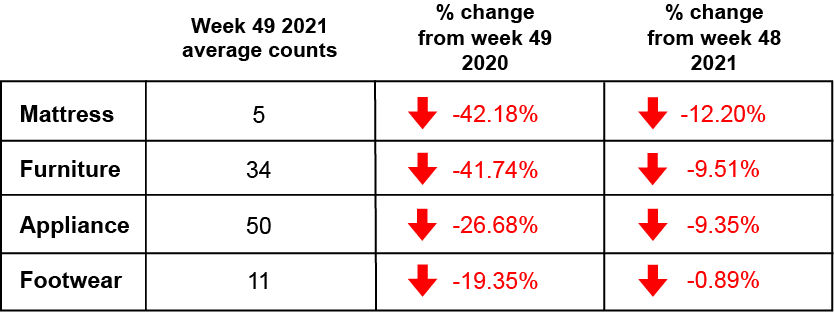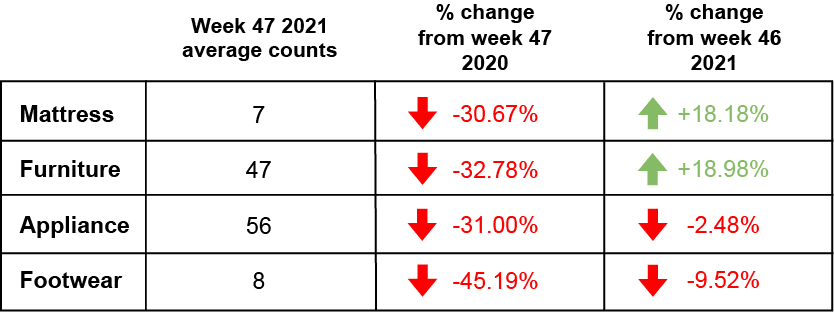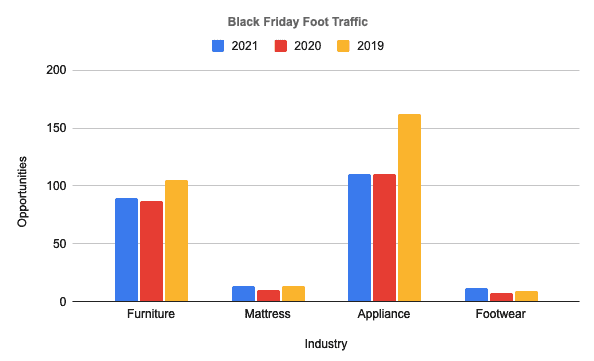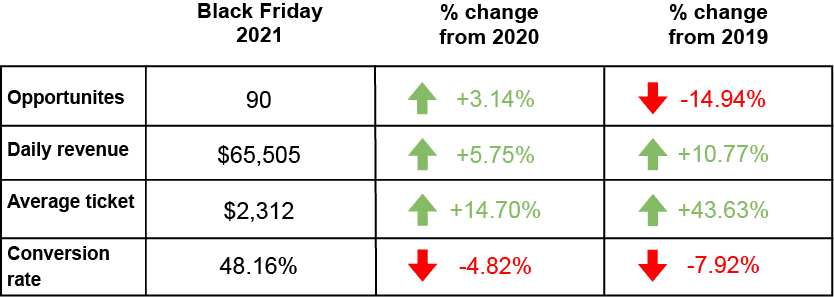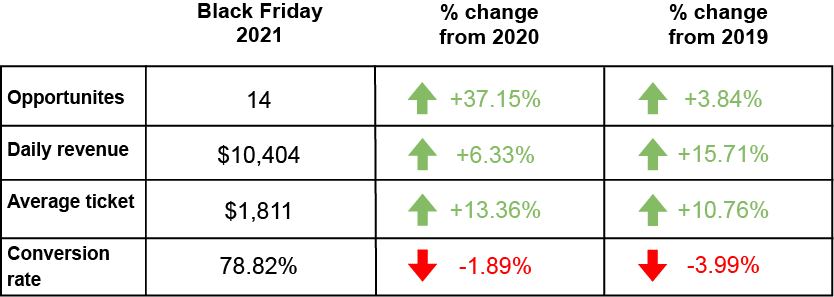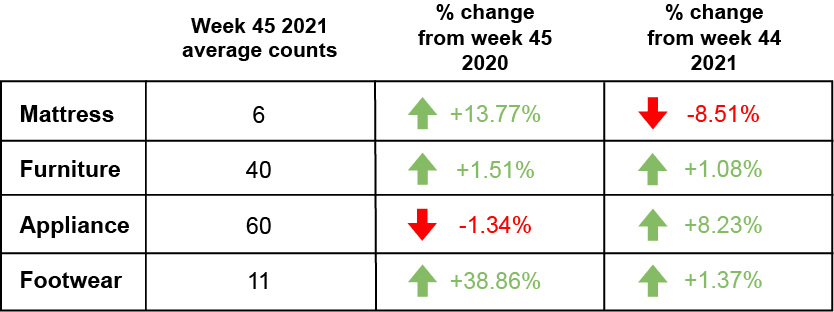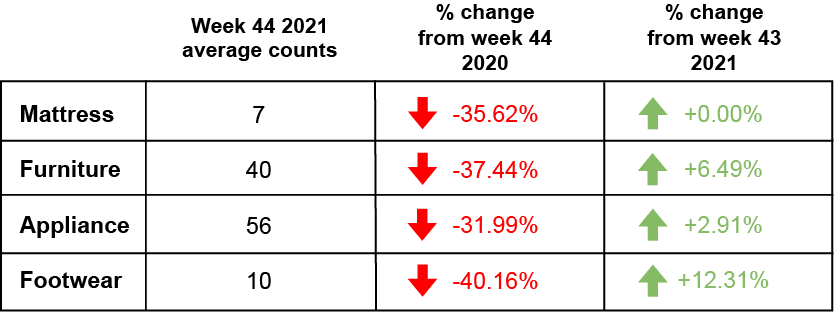January 11, 2022
Retail Traffic Trends #60: Q4 in the books
Despite having 20% less foot traffic than Q4 2020, both the furniture and mattress industries ended the year with increases in both average ticket and daily revenue.
As we start the new year, this week we dive deep into Q4 2021 and see how each industry performed during the holiday season.
DON’T FORGET: Doorcounts weekly webinars start today at 12 pm EST. Join the Doorcounts team and learn best practices to make the most out of your time.
THIS WEEK’S HIGHLIGHTS
- DOORCOUNTS WEBINAR TODAY: Join us today at 12 pm EST for our first weekly webinar. CLICK HERE TO JOIN WEBINAR
- Q4 in the furniture industry: The highs and lows for the furniture industry in Q4.
- Q4 in the mattress industry: How the mattress industry increased daily revenue by 30%.
FOOT TRAFFIC INDEX
Here’s a look at last week’s foot traffic compared to the same time last year.
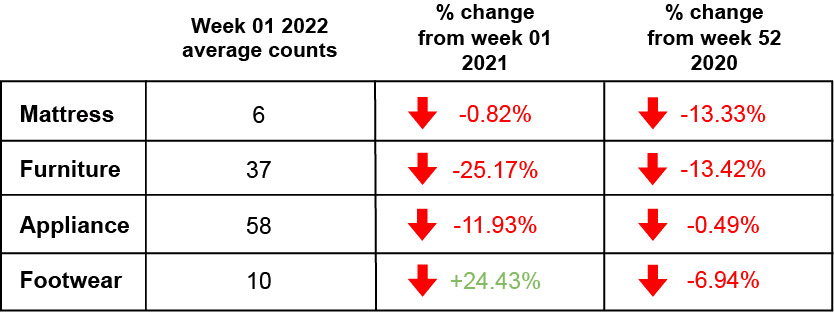
FOOT TRAFFIC TRENDS
Industry insights so you can convert your foot traffic into more sales.
Q4 Furniture industry
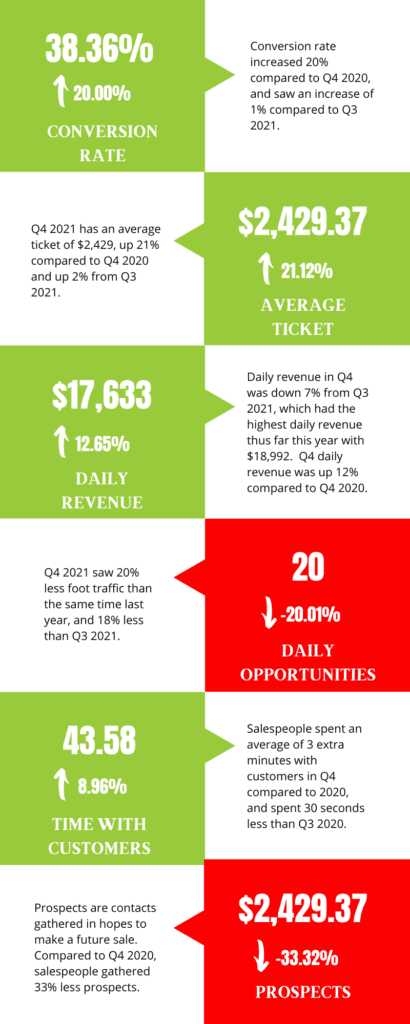
Q4 Mattress industry
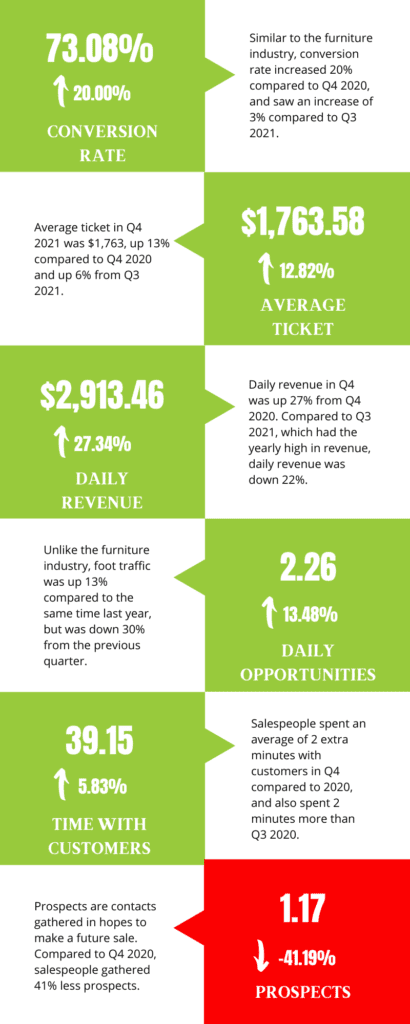
Retail Snippets
Responsibility: Why corporate social responsibility matters to your business.
Must-see trends: 10 retail trends to keep an eye on in 2022.
Robot stores: Chinese e-commerce giant JD.com sets challenge to Amazon with the first ‘robotic shops’ in Europe.
Beyond the Hype: 6 defining factors for a successful business.
RANDOM IRRELEVANCE
Beyond Meat: KFC to launch plant-based fried chicken made with Beyond Meat nationwide.
Diamond rain: ‘Diamond rain‘ on Uranus and Neptune seems likely.
A small world: Chemists use DNA to build the world’s tiniest antenna.


